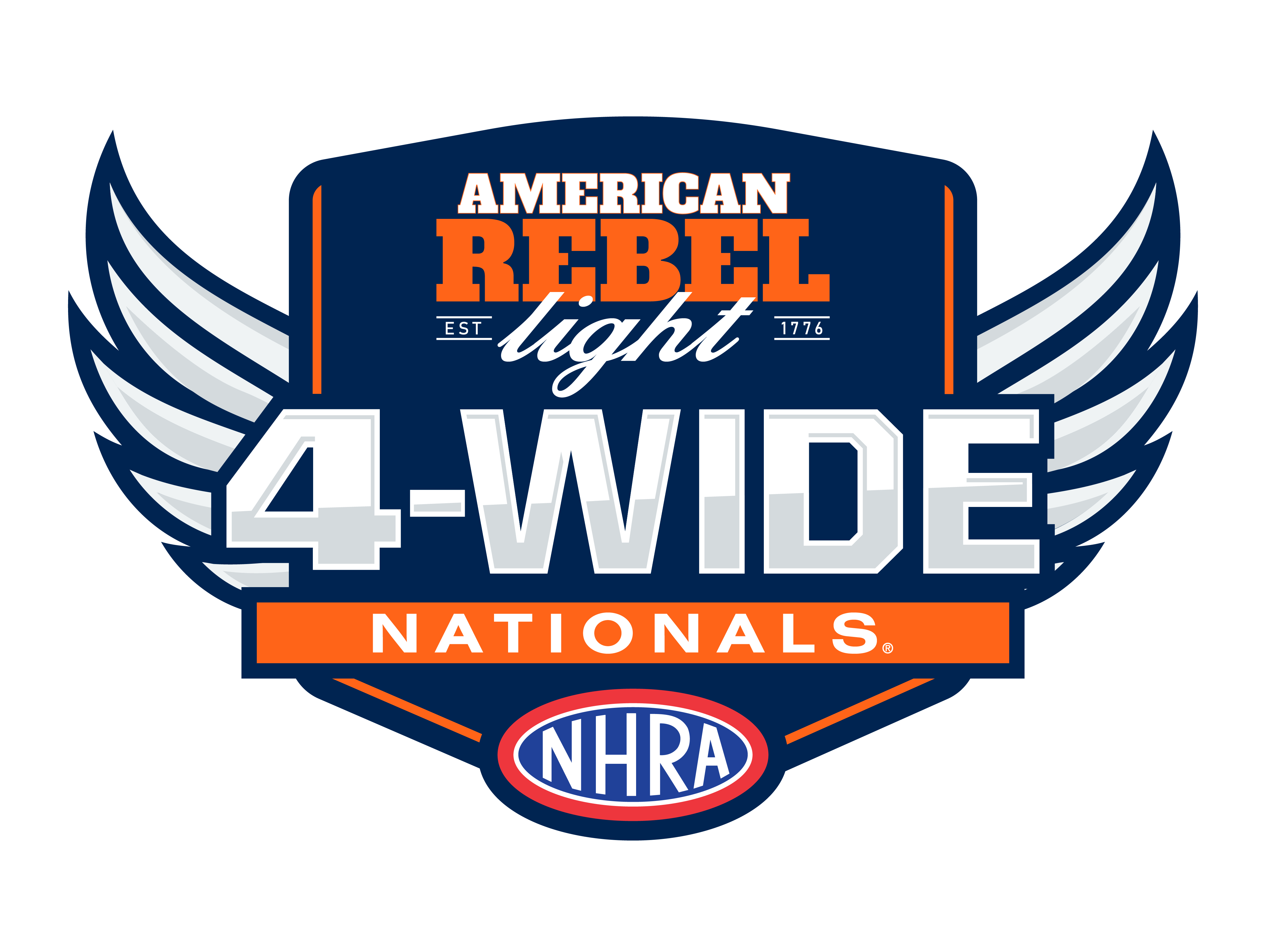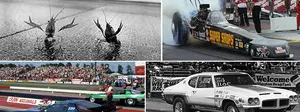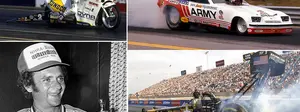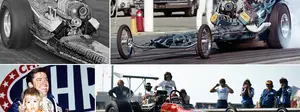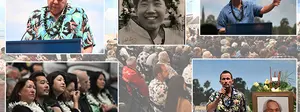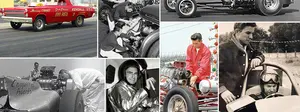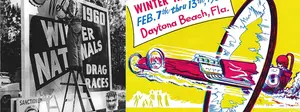

History lessons relearned
 |
Flying home Monday, the battery in ol’ Lappy went dead in mid-sentence of the sixth paragraph of the event-overall story I was writing for this week’s coverage. No warning, no flashing lights, no dropped cylinder or consonant … just lights out. Although this was a bit of a bummer and even though the ol’ iPod was fully stocked and charged, I went old school and dug out my tattered and torn copy of Robert Post’s brilliant book, High Performance. The 400-plus-page hardcover -- subtitled The Culture and Technology of Drag Racing, 1950-1990 -- is hefty enough to KO a hijacker but way too valuable to do so.
It’s a steadfastly researched, earnestly footnoted, and unquestionably informative and entertaining read. I’ve been around this quarter-mile gig for 26 years professionally and 10 years before that as a fan, and I like to think I know a lot about a lot, but every time I pick up this book, I’m reminded of what I’ve forgotten I knew (even though some of my ND articles are sourced) or what I never knew in the first place.
I read it cover to cover before it came out in 1994 –- I still have the paperback uncorrected proof that some of us were given in advance (complete with photocopied images in place of actual photographs) –- but that was eons ago, and since I decided (or rather, you guys decided) that this column should contain a fair bit of stuff from “the good ol’ days,” I thought I’d better brush up on my history. I’ve been reading a chapter here and there, but it’s the kind of reading you need to absorb and think about to get the most out of.
I didn’t intend this column to start with a book review, but because I was flying home from the Gatornationals where “Big Daddy” was the grand marshal and because the chapters I read cover the demise of the slingshot, I thought that some of the info was worth sharing because, frankly, some people don’t know, and some people (whose initials begin with P.B.) sometimes forget.
 |
The Leslie Lovett photo at right, never before published to my knowledge, shows Garlits’ infamous and ironically numbered Swamp Rat XIII at the first Gatornationals in 1970, held then in mid-February. He lost in the semi’s when his new Garlitsglide two-speed –- his answer to the new Lenco –- broke. The Lenco was a huge step toward solving fuel racing’s biggest bane of the time, which was heat developing in the two-disc clutches of the direct-drive combinations. With engines spinning upward of 10,000 in the traps, the heat buildup led to clutch destruction, injuries, and deaths. Popular John Mulligan had died the year before of injuries after a clutch failure led to a fiery engine explosion. The Lenco promised a two-speed that was shifted at the top end rather than just off the line, with the overdrive taking the strain off the engine and clutch.
But three weeks after Gainesville, on March 8, the trans in SR XIII exploded just off the starting line in the final round at Lions’ Grand American event, taking with it half of “Big Daddy’s” throttle foot.
The stories told around the campfire for as long as I can remember paint the picture of Garlits confined to his hospital bed in Long Beach, vowing to never sit again behind the engine, drawing up exquisite plans for the first rear-engine (more correctly, mid-engine) car, which, of course, he debuted with a victory at the 1971 Winternationals, forever changing the face of Top Fuel racing.
That’s not exactly how it went. Garlits spent six weeks in the hospital –- Tom McEwen, a very close friend of Mulligan’s, helped him while away the hours watching Star Trek (perhaps leading to "Large Father’s" well-known obsession with UFOs?) –- and made mostly rough sketches of a proposed rear-engine car; Garlits’ best work was often done in his head. Garlits actually drove again later that year –- in the same front-engine car –- at Bristol, where he set low e.t. and top speed and went three rounds. He ran some more races and, according to Post, even began to get over his concerns about the slingshot design.
 |
Then came Indy. Garlits lost in the semifinals to Jim Nicoll, whose direct-drive-fed clutch exploded at the finish line against Don Prudhomme in the final, sawing the car in two. “Superman” survived unscathed, Prudhomme was in tears, and Garlits knew that he had to head home “to commence work on the rear-engined dragster I had built a thousand times in my mind.”
Of course, Swamp Rat XIV would not be the sport’s first rear-engine car, and even Indy cars were mid-engined by that time. Emery Cook, "Red" Greth, and Jack Chrisman (his famous sidewinder), among others, had mid-engine dragsters in the 1950s, and the 1960s also had more than its share, including Tony Nancy’s Steve Swaja-designed, Frank Huszar-built “wedge” (built in 1965 but crashed shortly thereafter in Ohio), and even though they were gas-powered, all had the tendency to get unstable in the lights. Nitrowise, in the late 1960s, there were several notable tries, including Duane Ong's Pawnbroker and the ill-fated Woody Gilmore/Pat Foster entry (which ended up in pieces at Lions its third time out). Mark Williams built a car that originally was campaigned by Dan Widner and Mike Dollins and then by the Kaiser Bros. and experienced some success. (A cutaway drawing of the car inked by Tom West is at the end of this column.)
Former ND Editor Bill Holland, who counts Williams among his current clients and was at the helm at ND during those years, remembers, “I saw the [Kaiser] car run at several WCS meets and at Ontario and Pomona -- all before Garlits debuted his car. Fact is, this car ran straight and strong -- but I believe it never won anything more than a Division 5 points race. If Junior Kaiser would have had a state-of-the-art elephant motor instead of a budget cast-iron 392, who knows how history would have played out?”
But just as the Wright brothers did not invent flight nor Henry Ford the automobile, they were the ones who showed everyone how it could and should be done, and such was the case with Garlits. During his prime, no one was smarter, more shrewd, nor more determined than “Big Daddy.” Garlits and his talented henchmen, T.C. Lemons and Connie Swingle, experienced the same ill-handling woes when they first ran SR XIV. It took two or three outings before Swingle changed the steering ratio from the 10:1 that was commonly used on slingshots to 6:1 to slow the steering response.
That the car would be successful was evident in its first three official outings, runner-ups at Lions and OCIR and then the big win in Pomona. He followed with a big win in Bakersfield, won the AHRA championship, and set both ends of the NHRA and AHRA national records. (Garlits loved the great vision the car offered, and his comments to T.C. are legendary. “Saw a big ol’ 3/8-inch bolt layin’ down there in the lights,” said Garlits. “Oh yeah?“ responded Lemons. ”Yeah," deadpanned Garlits. “Fine thread.”)
Garlits’ success that year spelled the death of the slingshot. The last front-engine car to win an NHRA national event was Art Marshall’s high-backed car, the former McEwen Hot Wheels dragster, which won the 1972 Grandnational and, honestly, was lucky to do that.
The credit for the rear-engine car does not belong alone to Garlits, but rather collaboratively to everyone who ever built one, successful or not, but one could certainly argue that "Gar" showed them all the light at the end of tunnel.
 |







